The Cote Bleue / Chaine de L’Estaque stretches from Martigues to L’Estaque near Marseille. It is a mountain chain that is not to high and where you can do spectacular walks alongside the cost. The cost has some beautifull villages like Niolon and a few nice anchoring bays, in Carro, Sausset les Pins, near Carry-le-Rouet, and near Niolon. Cote Bleue / Chaine de L’Estaque, map
Cote Bleue / Chaine de L’Estaque, map
From the Golfe du Fos there is the Cote Bleu with a number of small marinas, though in high season you will struggle to get a berth in them. Once up to Rade de Marseille you can choose whether to go into the heart of Marseille or hang around the fringes. One option is to go to Frioul and get the ferry over to Marseille proper, but whatever you do its well worth visiting this bustling frenetic city with its eccentric inhabitants.
La Côte Bleue constitue la partie septentrionale de la Rade de Marseille (France). Située à l’Est du Golfe de Fos, elle est séparée de l’Etang de Berre par la Chaîne de l’Estaque ou de la Nerthe.
Le littoral de la Côte Bleue s’étend sur une trentaine de kilomètres, depuis la Pointe de Corbière (située dans la rade de Marseille), jusqu’à l’Anse des Laurons, à l’Ouest . Le Massif de la Nerthe descend en pente douce à l’Ouest (Cap-Couronne), et de façon plus abrupte à l’Est (la Redonne, Niolon). Falaises et calanques constituent alors le relief dominant.
Carro / Cap Couronne 9km/5.5mi south of Martigues and pleasantly situated on a hill above the Anse du Verdon lies the resort of La Couronne. 2 km/1NM south rises Cap Couronne, from which there is a good view of the sandy bays to the east. 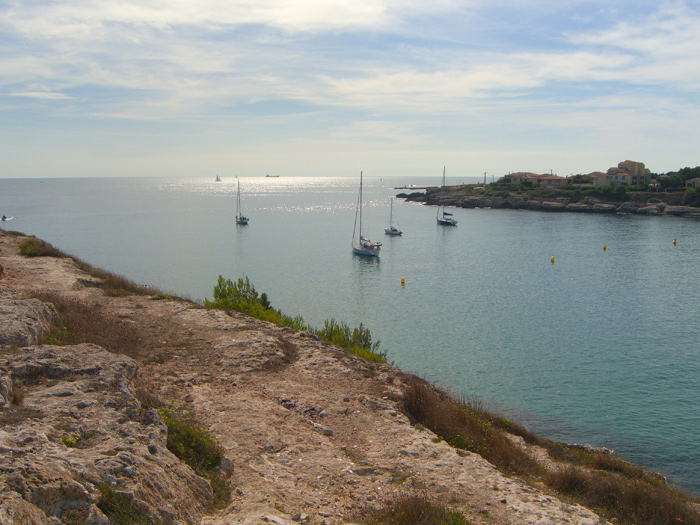
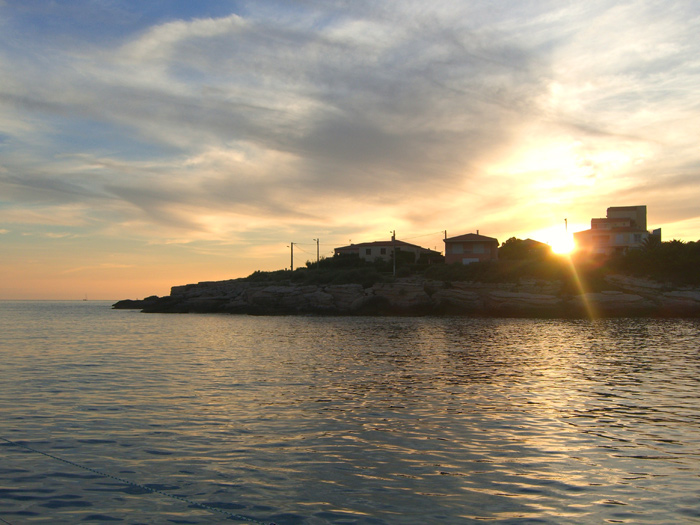 Carro, Baye de la Couronne Sausset-les-Pins On a little bay, protected by the southern escarpment of the Chaîne de l’Estaque (which was one of the subjects of Paul Cézanne) lies the fishing port and resort of Sausset-les-Pins, 6 km/4 NM east of La Couronne. It is popular as a recreation area for the people of Marseilles. Carry-le-Rouet The fishing port and resort of Carry-le-Rouet, 4 km/2.5 NM east on the southern foot of the Chaîne de l’Estaque, is a popular resort and yacht anchorage. The sector of Le Rouet-Plage at the end of the charming Vallon de L’Aigle is especially attractive. Just to the east lies the beautiful Calanque des Anthénors ( yachting and swimming ) and the little bay of Méjean.
Carro, Baye de la Couronne Sausset-les-Pins On a little bay, protected by the southern escarpment of the Chaîne de l’Estaque (which was one of the subjects of Paul Cézanne) lies the fishing port and resort of Sausset-les-Pins, 6 km/4 NM east of La Couronne. It is popular as a recreation area for the people of Marseilles. Carry-le-Rouet The fishing port and resort of Carry-le-Rouet, 4 km/2.5 NM east on the southern foot of the Chaîne de l’Estaque, is a popular resort and yacht anchorage. The sector of Le Rouet-Plage at the end of the charming Vallon de L’Aigle is especially attractive. Just to the east lies the beautiful Calanque des Anthénors ( yachting and swimming ) and the little bay of Méjean.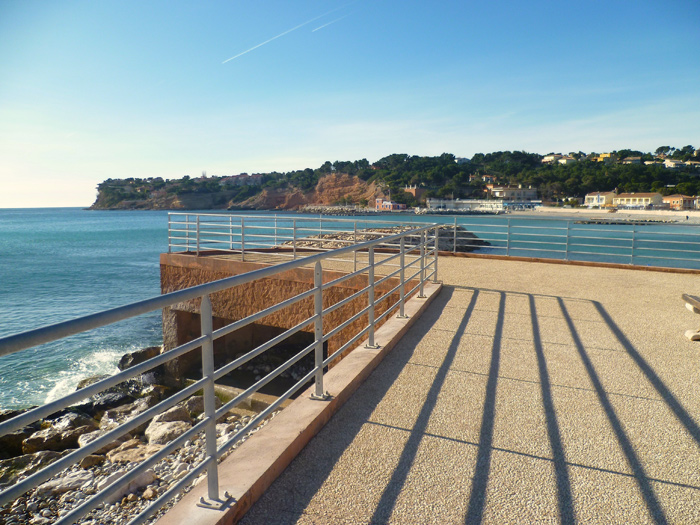 Anse du Rouet Niolon / La Vesse The calanques belonging to the village of Le Rove are true jewels of the blue coast of Provence. Climb to the top of the cliff between La Vesse and Niolon. Prepare yourself for a breathtaking view: on your left you’ll see La Vesse – white houses with orange roofs, white fisher-boats and an aqueduct of the rail-line Marseille-Miramas. On your right – a tiny peninsula of Niolon with its turquoise fishing-bay. In front of you – amazing panorama of Marseille. You can also take the old smugglers-path between la Vesse and Niolon (you’ll find it just before the entry to Niolon) to enjoy more breathtaking views and an unforgetable walk on the cliff-edge. You can decide for two hiking tracks here, one leads east, towards L’Estaque and Marseille. The other one leads from Niolon westwards, in the direction of Carry-le-Rouet. There you can take a train back, as the traintracks run alongside the coast here…
Anse du Rouet Niolon / La Vesse The calanques belonging to the village of Le Rove are true jewels of the blue coast of Provence. Climb to the top of the cliff between La Vesse and Niolon. Prepare yourself for a breathtaking view: on your left you’ll see La Vesse – white houses with orange roofs, white fisher-boats and an aqueduct of the rail-line Marseille-Miramas. On your right – a tiny peninsula of Niolon with its turquoise fishing-bay. In front of you – amazing panorama of Marseille. You can also take the old smugglers-path between la Vesse and Niolon (you’ll find it just before the entry to Niolon) to enjoy more breathtaking views and an unforgetable walk on the cliff-edge. You can decide for two hiking tracks here, one leads east, towards L’Estaque and Marseille. The other one leads from Niolon westwards, in the direction of Carry-le-Rouet. There you can take a train back, as the traintracks run alongside the coast here…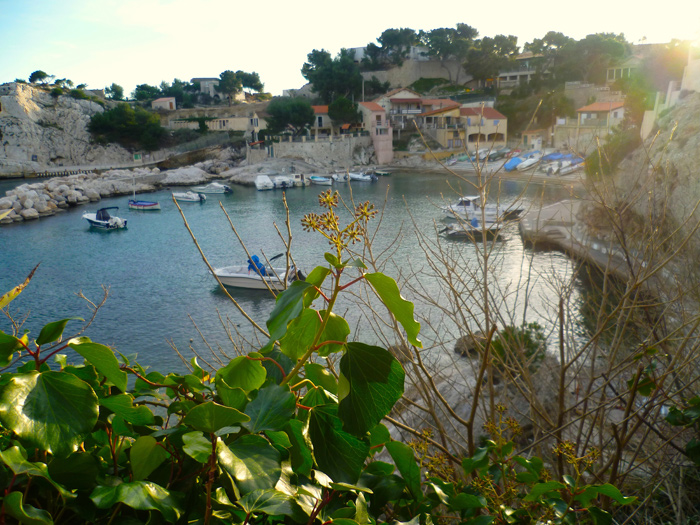 Niolon, the harbour (not for sailing boats, too shallow…)
Niolon, the harbour (not for sailing boats, too shallow…)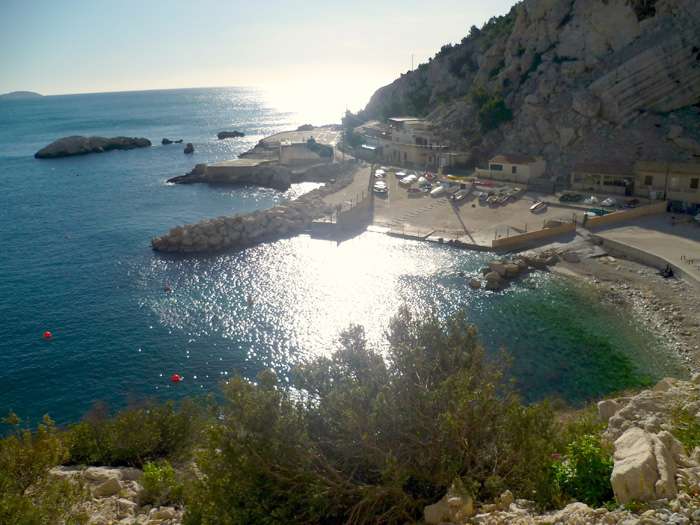 Port La Vesse
Port La Vesse Port La Vesse L’Estaque It’s both a humble fishing port and a working-class industrial town, perched in between the sea and the Chaine de L’Estaque, the craggy and dramatic range of limestone hills that runs all along the Blue Coast. Just west of L’Estaque is a very large landscaped area of urban beaches hugely popular with day-trippers: the Plages de Corbière. Today L’Estaque has been absorbed into Marseille – it’s the city’s 16th arrondissement – and is easily accessible by public transport. But, while offering panoramic views of Marseille across the bay which inspired some of Cézanne’s most famous works, it retains its entirely separate atmosphere and identity.
Port La Vesse L’Estaque It’s both a humble fishing port and a working-class industrial town, perched in between the sea and the Chaine de L’Estaque, the craggy and dramatic range of limestone hills that runs all along the Blue Coast. Just west of L’Estaque is a very large landscaped area of urban beaches hugely popular with day-trippers: the Plages de Corbière. Today L’Estaque has been absorbed into Marseille – it’s the city’s 16th arrondissement – and is easily accessible by public transport. But, while offering panoramic views of Marseille across the bay which inspired some of Cézanne’s most famous works, it retains its entirely separate atmosphere and identity.
Cézanne first discovered L’Estaque in 1864, returned soon afterwards to avoid being conscripted to fight in the Franco-Prussian War (1870-71) and subsequently went back again and again, always staying at a house (marked with a plaque) next to the church on the Place Malterre. More artists would be inspired by L’Estaque. The German Expressionist August Macke spent time there and Andre Derain, a contemporary and colleague of Matisse. Arists working in other media have links to L’Estaque too. In 1877, the writer Emile Zola went there to escape the furore caused by L’Assommoir, his novel about alcoholism and the working-classes. The short book he wrote there, Naïs Micoulin, is a love story set in L’Estaque (it was made into a film by Marcel Pagnol in 1945).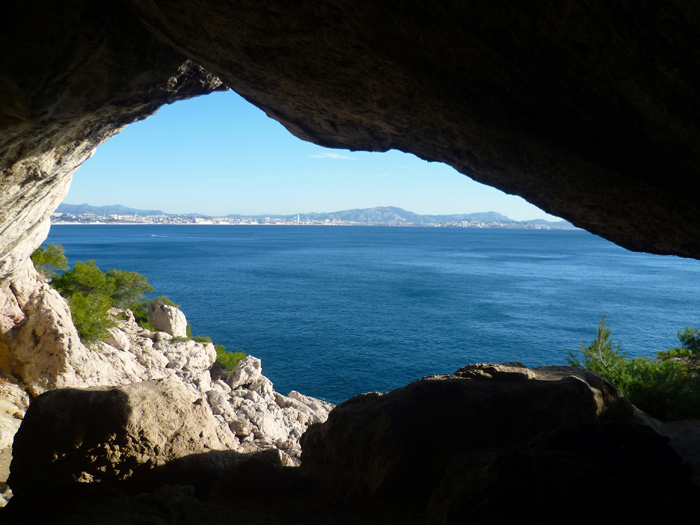 hiking in the chaine de L’Estaque. between La Vesse and L’Estaque, looking at Marseille
hiking in the chaine de L’Estaque. between La Vesse and L’Estaque, looking at Marseille
